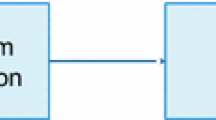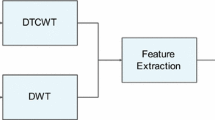Abstract
During the gas tungsten arc welding of nickel based superalloys, the secondary phases such as Laves and carbides are formed in final stage of solidification. But, other phases such as γ^” and δ phases can precipitate in the microstructure, during aging at high temperatures. Nevertheless, choosing the appropriate conditions of welding can minimize the formation of the Nb-rich Laves phases and thus reduce the susceptibility to solidification cracking. This study proposed and evaluated the performance of an automated processing system to microstructurally characterizing the kinetics of phase transformations on a Nb-base alloy, thermally aged at 650 and 950 °C for 10, 100 and 200 h, using Linear Discriminant Analysis (LDA) on Background echo and Backscattered ultrasound signals at frequencies of 4 and 5 MHz. The main goal of this work is to design a more practical processing system in terms of the accuracy and the speed of processing. This system is composed of three methodologies: the first methodology uses LDA coefficients of normalized ultrasound signals, the second methodology uses LDA coefficients of error signals of the third-order linear prediction model of normalized ultrasound signals and the third methodology uses LDA coefficients of Discrete Cosine Transform. In all three methods, the Probabilistic Neural Network was used as a classifier. The highest accuracies were provided by the third methodology with average classification accuracies of 94.50 and 75.50 %, respectively for thermal aging at 650 and 950 °C. Indeed, LDA proved to be an efficient processing step for microstructural classification tasks.



Similar content being viewed by others
References
Boser, O. (1979). The behavior of inconel 625 in a silver environment. Materials Science and Engineering, 41(1), 59–64.
Kohl, H., & Peng, K. (1981). Thermal stability of the superalloys Inconel 625 and Nimonic 86. Journal of Nuclear Materials, 101(3), 243–250.
Thomas, C., & Tait, P. (1994). The performance of Alloy 625 in long-term intermediate temperature applications. International Journal of Pressure Vessels and Piping, 59(1–3), 41–49.
Cieslak, M. (1991). The welding and solidification metallurgy of alloy 625. Welding Journal, 70(2), 49–56.
Cieslak, M., Headley, T., & Romig, A. (1986). The welding metallurgy of HASTELLOY alloys C-4, C-22, and C-276. Metallurgical Transactions A, 17(11), 2035–2047.
Yang, J., Zheng, Q., Sun, X., Guan, H., & Hu, Z. (2006). Formation of μ phase during thermal exposure and its effect on the properties of K465 superalloy. Scripta Materialia, 55(4), 331–334.
Dupont, J., Banovic, S., & Marder, A. (2003). Microstructural evolution and weldability of dissimilar welds between a super austenitic stainless steel and nickel-based alloys. Welding Journal, 82(6), 125–156.
de Albuquerque, V., Filho, P., Cavalcante, T., & Tavares, J. (2010). New computational solution to quantify synthetic material porosity from optical microscopic images. Journal of Microscopy, 240(1), 50–59.
Albuquerque, V., Tavares, J., & Cortez, P. (2010). Quantification of the microstructures of hypoeutectic white cast iron using mathematical morphology and an artificial neural network. IJMMP, 5(1), 52.
de Albuquerque, V., de Alexandria, A., Cortez, P., & Tavares, J. (2009). Evaluation of multilayer perceptron and self-organizing map neural network topologies applied on microstructure segmentation from metallographic images. NDT & E International, 42(7), 644–651.
de Albuquerque, V., Cortez, P., de Alexandria, A., & Tavares, J. (2008). A new solution for automatic microstructures analysis from images based on a backpropagation artificial neural network. Nondestructive Testing and Evaluation, 23(4), 273–283.
Papa, J., Nakamura, R., de Albuquerque, V., Falcão, A., & Tavares, J. (2013). Computer techniques towards the automatic characterization of graphite particles in metallographic images of industrial materials. Expert Systems with Applications, 40(2), 590–597.
Nunes, T., de Albuquerque, V., Papa, J., Silva, C., Normando, P., Moura, E., & Tavares, J. (2013). Automatic microstructural characterization and classification using artificial intelligence techniques on ultrasound signals. Expert Systems with Applications, 40(8), 3096–3105.
de Albuquerque, V., Silva, C., Normando, P., Moura, E., & Tavares, J. (2012). Thermal aging effects on the microstructure of Nb-bearing nickel based superalloy weld overlays using ultrasound techniques. Materials & Design, 36, 337–347.
Shankar, V., Bhanu Sankara Rao, K., & Mannan, S. (2001). Microstructure and mechanical properties of Inconel 625 superalloy. Journal of Nuclear Materials, 288(2–3), 222–232.
Schölkopf, B., & Smola, A. (2002). Learning with kernels. Cambridge: MIT Press.
de Albuquerque, V., de Macedo Silva, E., Pereira Leite, J., de Moura, E., de Araújo Freitas, V., & Tavares, J. (2010). Spinodal decomposition mechanism study on the duplex stainless steel UNS S31803 using ultrasonic speed measurements. Materials & Design, 31(4), 2147–2150.
Normando, P., Moura, E., Souza, J., Tavares, S., & Padovese, L. (2010). Ultrasound, eddy current and magnetic Barkhausen noise as tools for sigma phase detection on a UNS S31803 duplex stainless steel. Materials Science and Engineering A, 527(12), 2886–2891.
de Macedo Silva, E., de Albuquerque, V., Leite, J., Varela, A., Moura, E., & Tavares, J. (2009). Phase transformations evaluation on a UNS S31803 duplex stainless steel based on nondestructive testing. Materials Science and Engineering A, 516(1–2), 126–130.
Makhoul, J. (1975). Linear prediction: a tutorial review. Proceedings of IEEE, 63(4), 561–580.
Ahmed, N., Natarajan, T., & Rao, K. (1974). Discrete cosine transform. IEEE Transactions on Computers, 23(1), 90–93.
Duda, R., Hart, P., & Stork, D. (2001). Pattern classification. New York: Wiley.
Jaynes, E., & Bretthorst, G. (2003). Probability theory. Cambridge: Cambridge University Press.
Cox, D. (2006). Principles of statistical inference. Cambridge: Cambridge University Press.
Freedman, D. (2005). Statistical models. Cambridge: Cambridge University Press.
Devijver, P., & Kittler, J. (1982). Pattern recognition. Englewood Cliffs: Prentice/Hall International.
Acknowledgments
The first author thanks from Victor Hugo C. de Albuquerque and is also grateful for his help for providing the experimental dataset.
Author information
Authors and Affiliations
Corresponding author
Rights and permissions
About this article
Cite this article
Vejdannik, M., Sadr, A. Application of Linear Discriminant Analysis to Ultrasound Signals for Automatic Microstructural Characterization and Classification. J Sign Process Syst 83, 411–421 (2016). https://doi.org/10.1007/s11265-015-1029-x
Received:
Revised:
Accepted:
Published:
Issue Date:
DOI: https://doi.org/10.1007/s11265-015-1029-x




